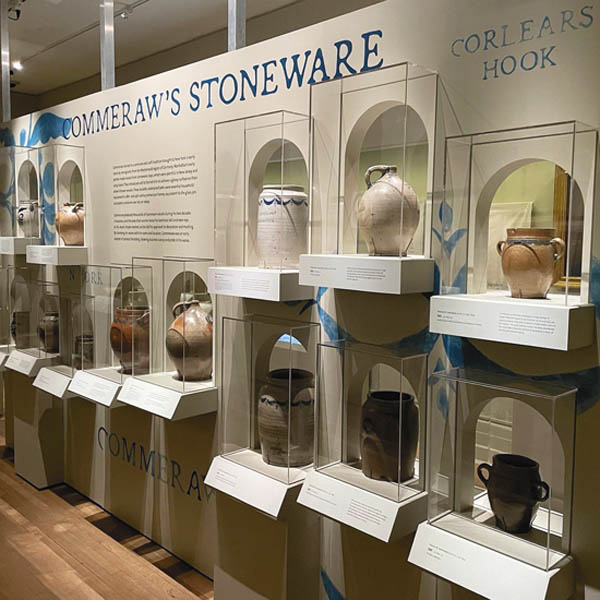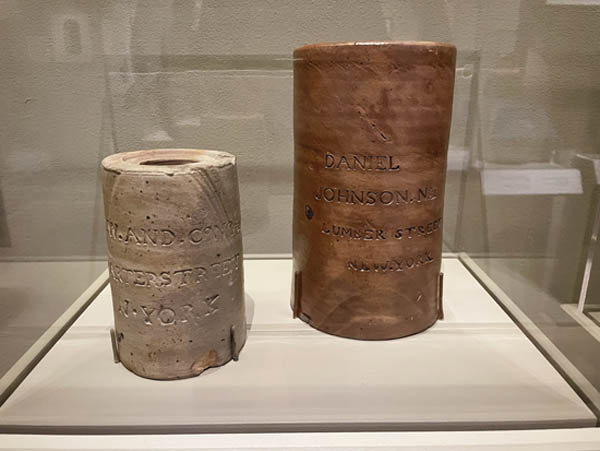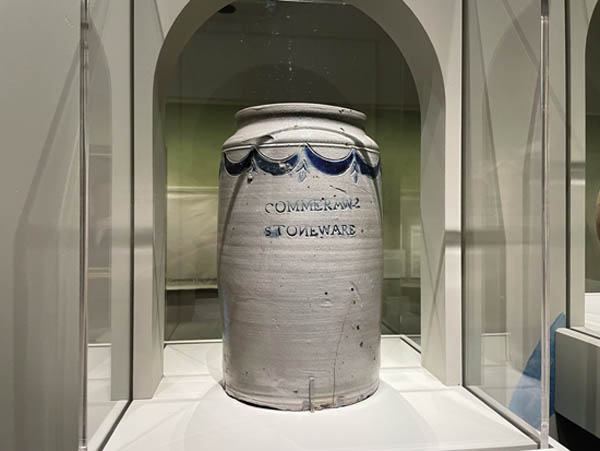New Stoneware Exhibit: The Life And Legacy Of Free Black Potter Thomas W. Commeraw
Pottery Show On View At New York Historical Society In Manhattan
By Justin W. Thomas - February 17, 2023
The widely anticipated Thomas Commeraw (ca. 1771-1823) stoneware exhibit at the New York Historical Society in Manhattan recently opened and will run through May 28. Curated by Margi Hofer and Mark Shapiro, Crafting Freedom: The Life and Legacy of Free Black Potter Thomas W. Commeraw is the first exhibition to bring overdue attention to a skilled craftsman whose racial identity was long overlooked. Born enslaved, Commeraw rose to prominence as a free Black entrepreneur, owning and operating a successful pottery. Over a period of two decades, Commeraw amassed property, engaged in debates over state and national politics and participated in the life of New York Citys free Black community. The exhibition explores Commeraws multifaceted history as a craftsman, business owner, family man and citizen. For many years, Commeraw was thought to have been a white potter of French descent, although that misinterpretation quickly changed when author Brandt Zipp, a partner at Crocker Farm in Sparks, Md., discovered in 2003 that he was actually a black man. He uncovered this information in New York Citys 1800 Federal census. Furthermore, Zipps 20 or so years worth of research revealed that Commeraw was born enslaved and probably trained in the Crolius family stoneware workshop in Manhattan, where he was eventually freed in 1779, following the death of William Crolius. Furthermore, this exhibit follows the publication of Zipps groundbreaking book that was published by Crocker Farm in the fall of 2022, titled, Commeraws Stoneware: The Life and Work of the First African-American Pottery Owner. According to Zipp, In 2003, a chance encounter with a census record embarked me on a quest that has more or less consumed my research life ever since. The book was designed from the beginning to be a definitive work on an important early American craftsman, abolitionist and (ultimately) hopeful founder of an African republic, a man who slipped through the fingers of history. I had the opportunity to see this exhibit on Jan. 28, and it certainly lived up to the hype Ive heard and read. In many ways, this exhibit brings Commeraws work to life, showcasing around 20 examples of his stoneware production from the late 1790s to the 1819 period, as well as paperwork and other artifacts. The forms include oyster jars, crocks and jugs, highlighted by a jug that was loaned from the collection of Joseph Gromacki. Crocker Farm sold this jug in 2021 for $96,000. The piece defines the type of wares that Commeraw produced in Corlears Hook in Manhattan and is considered to be a masterpiece of Commeraws production. Impressed with an elaborate drape and tassel motif and highlighted with cobalt, its also impressed with Commeraws makers mark, COMMERAWS STONEWARE N. YORK CORLEARS HOOK. The exhibit also features Commeraws involvement with the local oyster trade, whereas the oyster jars he made have been recovered from archaeological sites all over, along with a jug that was found on a shipwreck off the coast of Norway. New York City as a port city during this period was an active one. The exhibit also showcases some outstanding objects that were made by David Morgan in Manhattan, another black potter who likely had a working relationship with Commeraw, as well as various objects made by the Crolius family, including actual tools used for decorating stoneware such as stamps. These objects include a spouted stoneware pitcher from the Elie Nadelman (1882-1946) collection at the New York Historical Society that was made by Clarkson Crolius Sr. (1773-1843) in 1798. This is the only object known to exist today that bears Clarksons signature. The pitcher is profusely decorated with incised and punch flowers and vines. Overall, though, this is a landmark exhibit that tells the story of one of the most important potters in American history. Commeraws story is inspirational, but his life was by no means easy. Whether you have an interest in historical American utilitarian pottery or not, this is an exhibit that tells the story of a pioneer black American and first African-American pottery owner in the country, along with the hardships and successes that came with it. For those reasons, it is a wonderful exhibit and testament to the life of Thomas W. Commeraw. Sources Beach, Laura. Thomas W. Commeraw: How Groundbreaking Research Restored A Master New York Potter To Prominence. Antiques And The Arts Weekly, Jan. 27, 2023. Shapiro, Mark. Clay, Commerce, and a Free Man of Color. The Magazine Antiques, January/February 2023. Zipp, Brandt. Commeraws Stoneware: The Life and Work of the First African-American Pottery Owner. Sparks, Md., Crocker Farm, 2022.










SHARE
PRINT